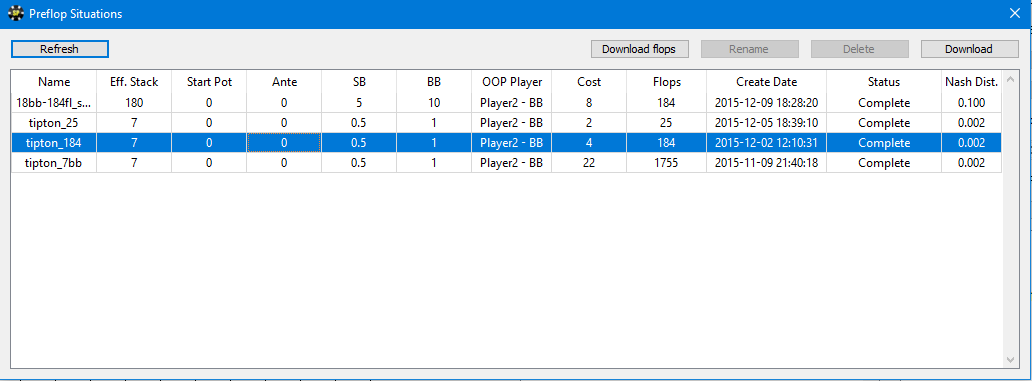In Texas Holdem Poker there are 1755 strategically meaningful flops that represent 22100 possible flops. For example, we treat flops like AsKsQs, AdKdQd, AcKcQc, AhKhQh as 1 strategically meaningful flop board. 1755 flops is still a big number of flops which makes attempts to approximate preflop EV for chosen spots as well as upcoming preflop solving quite a difficult task. Even for some simple 2-way preflop trees it could take several terabytes of RAM.
To simplify the complexity of the task players and gto software developers decided to use subset of flops instead all of 1755 flops that will satisfy a set of conditions.
Modern methods are based on defining some metrics which a good subset must satisfy and then running a solver of sorts to find the best subsets of N elements which scores the best on the metric. The metrics used are equity (against full range, against 50% of the range, against AA etc.) as well as EVs from all 1755 sets.
The algorithm starts from a random set and "evolves" at every iteration. Every step the subset is mutated in some ways and if the improvement is found that new subset becomes a new current one - rinse and repeat. The real EV results were divided into a training set and a testing set to avoid a situation where the same data is used for both training and testing.
Now, Simple Postflop includes 3 of the most accurate subsets of flops:
- 25 flops
- 74 flops
- 184 flops
Using them you could obtain preflop solutions much faster and with less RAM.
We did test calculations on some example trees on different subsets (25 and 184) of flops and results of the preflop GTO calculation available for free to every one of our users. This tree was also solved using a cluster of powerful servers on all 1755 possible flops, it required 4 TB of RAM. You could find solved preflop gto solutions in the Simple Postflop, in the menu Preflop -> Hu Preflop -> Cloud -> Preflop Situations
Not all poker solvers could solve GTO on the preflop, e.g. gtoplus solver is limited only for solving gto on the postflop. Pio Poker Solver is using the same approach for solving gto on the preflop as our Simple Postflop but it doesn't offers service in performing calculation upon request, as we did for preflop points and piosolver is 4 times expensive than Simple Postflop which makes pio gto solver uncompetitive to Simple Postflop. We developed a distributed version of preflop GTO solver, that allows us to calculate trees of unlimited complexity, however it could be very expensive.
Now, the approach of using subsets of flops for solving preflop is outdated. We developed Simple Preflop Holdem Poker Solver that uses another kind of abstraction which allows to solve preflop for any number of players and for any preflop action. To reduce complexity of the game Simple Preflop Holdem applies bucketing of hands on the postflop and texturing of bucketing. Hands are grouped to buckets according to their equity and group of hands treated as one hand on the postflop during preflop calculation.
There is one solver on the market that also allows you to use bucketing for preflop calculation - MonkerSolver. If we compare Monker vs Simple Preflop Holdem, our preflop poker solver is much cheaper and more trustworthy. For example, we posted an article where we described the error of how monker solver counted rake. The error in counting rake in monker poker solver led to the wrong solutions for over a couple of years for users, who performed calculations with rake.
Stay with us and choose our gto poker solvers to be confident in the quality of GTO solutions.
